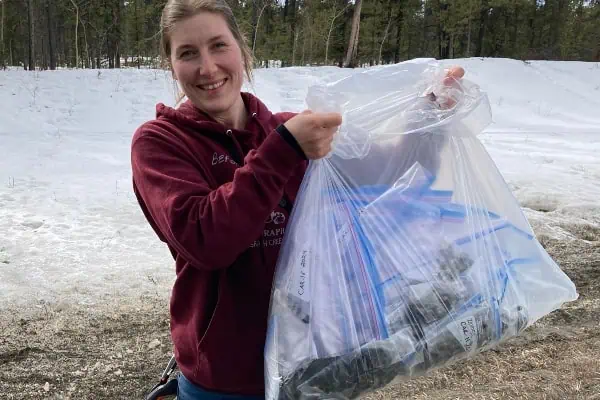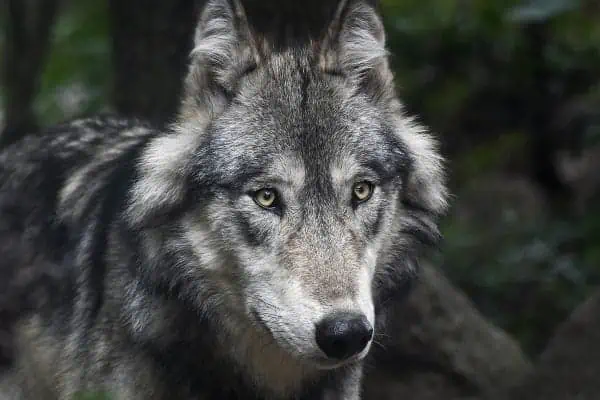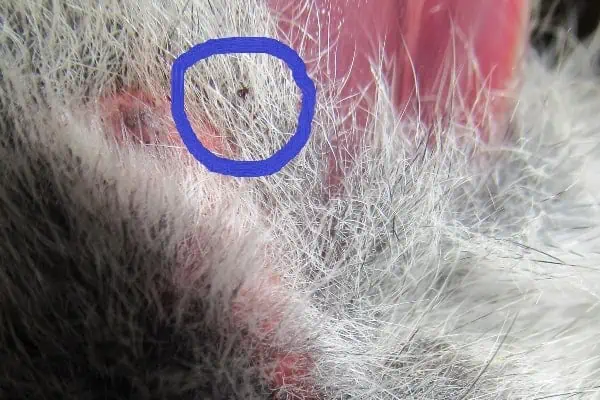I use the word ‘bug’ here, to describe little creatures with … legs. Insects, but more than that. Not everything I call ‘bug’ living underneath the ice are insects, some turn out to be crustaceans.
In the beginning of October, before it started snowing, there was a brief period when the thermometer dropped below zero Celsius long enough so that small lakes and ponds were able to freeze without the ice being mixed or covered with snow. A few days of clear ice!
In the guidebook Insects of the Yukon, edited by H.V. Dank, and J.A. Downs, I read that there are 145 species of caddisflies (Trichoptera) in the Yukon. Most of them here on the little lake I was laying on and seem to have similar casings with black and white bands. The caddisfly makes its casing with silk and the material available in the location where they live. Here, on the little lake, that means dark stuff and white mud particles. These casings are works of art.
Suddenly, a big bug skittered away along the bottom of the lake, disappearing into vegetation. It seemed huge, compared to all the other creatures, being at least an inch long.
Emailing with Jennifer Fang, an aquatic biologist in Toronto who has spent time looking at bugs here in the Yukon, I learned that this might have been a Hydrophilidae (scavenger beetle), or a Dytiscidae (diving beetle).
Bonnie Burns, a water specialist in the Yukon, confirmed that diving beetles are fun creatures to watch. Again reading Insects of the Yukon, which says there are 113 different species of diving beetles known in the territory.
Next, I peered into different places on different ponds. In the meantime, on my next visit to that lake, I found that snow had covered the ice, and I found myself bringing my prospector’s rock pick to hack a small hole in the ice to look again. That’s how I discovered Corixidae, also known as water boatmen, of which there are 12 known species in the Yukon.
True to their name, water boatmen move through the water in rowboat fashion, their legs look like oars. Some are very tiny.
I also discovered crustaceans. Amphipoda is a tiny crustacean known as freshwater shrimp, side swimmers or scuds. As one of the holes I made was slowly freezing over, a scud came up for a look with its black beady eyes. It seemed to realize the ice was reforming and quickly swam back to a warmer place and I think I saw it digging itself into the mud.
The people that are with me, or the ones I talk to later, might not all lay on the ice peering down, but they are enamored with my quest. They mention even smaller creatures living in Yukon lakes: copepods, rotifers and cladocerans. They point out creatures who live on the ice: arachnids, spiders and what could have been a caddisfly come out of its casing for the occasion.
Oh, and then there are snow fleas and what about snow flies, creatures that are basically made out of antifreeze.
It is a big world out there and not all of us sleep through the winter.




